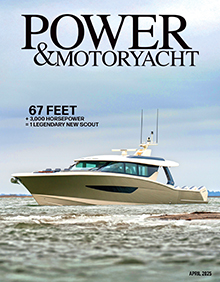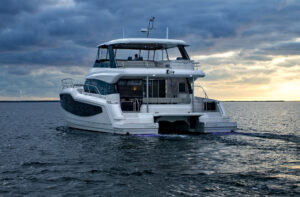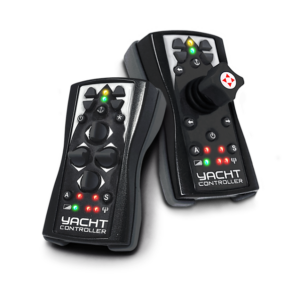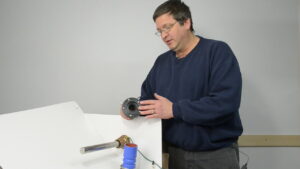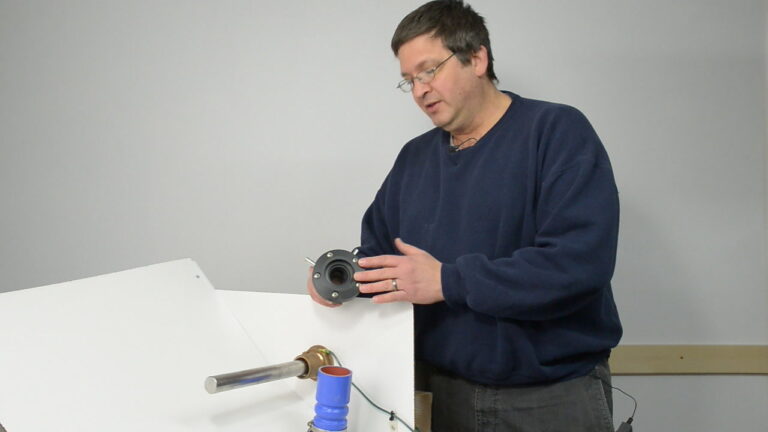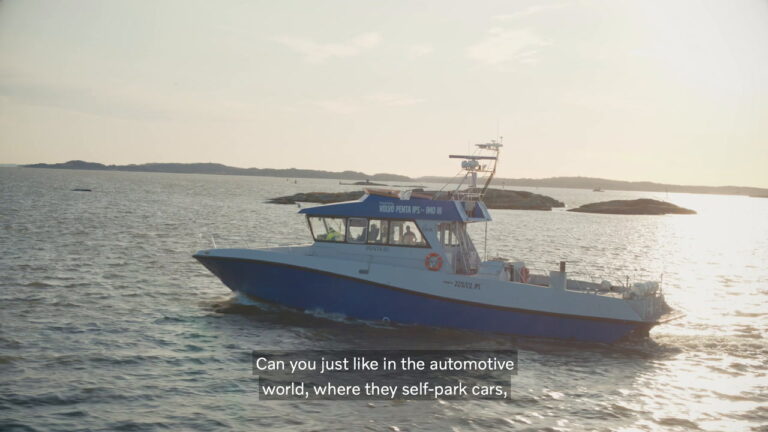By Peter Frederiksen

Molds also are produced with computer-operated five-axis milling machines, which are usually found at high-end builders that introduce new product at a steady pace. These machines can cost anywhere from several hundred thousand dollars to more than $1.5 million. Small boatbuilders sometimes will farm out their mold work to independent companies operating these machines for the purpose of getting new molds made more quickly. A five-axis machine can work 24/7, which is a huge help in expanding a product line and the quality of the mold it produces is amazingly accurate because it is all computerized. A five-axis milling machine project begins with blocks of foam that are carved with deft precision to mimic the actual part. Once the foam has been shaped, the plug is coated with a layer of epoxy, polyester, or some other kind of modelling paste, which is then surgically carved down to replicate the actual size of the part needed to be molded. The familiar drill of sanding, mold-release wax, gelcoat, and fiberglass laminations complete the project. What would take months to build by hand, say a one-piece mold for the deck assembly of a 45-foot boat from the pulpit to the cockpit, can be produced in a matter of weeks with a five-axis milling machine.
Molds are the tools of the boatbuilding operation and once they are created, the boatbuilding process moves rather quickly. From this point, fiberglass boat construction is compartmentalized into two basic categories: open molding and closed molding, with many material options available to the builder. Open molding consists of laminating the fiberglass cloth and core materials, such as end-grain balsa, plywood, or PVC foam, and resins, a layer at a time into the mold until the build schedule is satisfied. Coring acts like an I-beam sandwiched between laminated fiberglass skins to contribute stiffness and conserve structural weight. There are numerous resin formulas. Vinylester resin is a good choice for molding the bottom because its chemical makeup reduces the chance of water permeating the lamination, which helps prevent blistering. Isophthalic polyester resins work well for topside laminations. Fiberglass cloth varies in weight, texture, and weave, and high-tech materials like carbon fiber and Kevlar are also used with excellent results. But the key factor always comes back to the fact that the laminations must be thoroughly impregnated with resin to achieve the necessary strength. A factory tour is highly recommended if you are contemplating buying a new boat because you will see for yourself how it is built and get the opportunity to speak with the folks doing the actual work while learning about the techniques and tools being used.
After a lamination is wetted, for example, the glass masters will use metal rollers to thoroughly distribute the resin to impregnate the fiberglass to eliminate the possibility of resin starved areas, which could weaken the completed structure. This is a labor-intensive process. Another method to eliminate voids and resin-starved areas is vacuum bagging. With this technique the wetted fiberglass and core is covered with a thin plastic veil that seals off the area. Any air present beneath the veil is then extracted with a low-volume vacuum pump, which also draws the resin through open slits in the fiberglass and kerfs in the core material effectively filling and sealing the laminate. Vacuum bagging is often employed to manufacture composite bulkheads, or laminate hull bottoms where end-grain balsa might be used.
While these open-mold methods are proven techniques, they have a few noteworthy drawbacks to construction and manufacturing. Resin alone is very brittle. Its main function is to wet the glass fibers and, as it cures to a solid state, impart significant strength to the lamination. However, resin also contributes weight, and this can affect a boat’s performance and operational efficiency. Aboard a trawler yacht where speed is less critical, excess weight is not that much of an issue. However, on a sportfishing convertible or a high-performance boat where speed is more important, weight is a big-time factor. In open-mold construction, it is very easy to overload a laminate with resin and end up with a ratio in the area of 65 percent resin and 35 percent fiberglass. This is acceptable, but not necessarily desirable because of the resin weight and the fact that excess resin can actually weaken a part. Vacuum bagging can help reduce some resin weight, but since bagging is only done on certain parts of the boat it is not sufficient in and of itself in the weight reduction category. Also, vacuum bagging only comes into play after the part has already been saturated with resin.

Today perhaps the biggest single drawback to open-mold construction is that it allows both volatile organic compounds (VOCs) and hazardous airborne pollutants (HAP) to escape into the atmosphere. Most boaters and even nonboaters are immediately aware of a sweet smell when they get near fiberglass, and this scent belongs to the styrenated resin used in the manufacturing process. When laminating in open molds workers wear respirators and protective clothing. Nonetheless, the Environmental Protection Agency and state regulatory groups have pressured boat manufacturers to reduce these pollutants to a level that open-mold construction of fiberglass boats may go the way of the dinosaur before too long.

